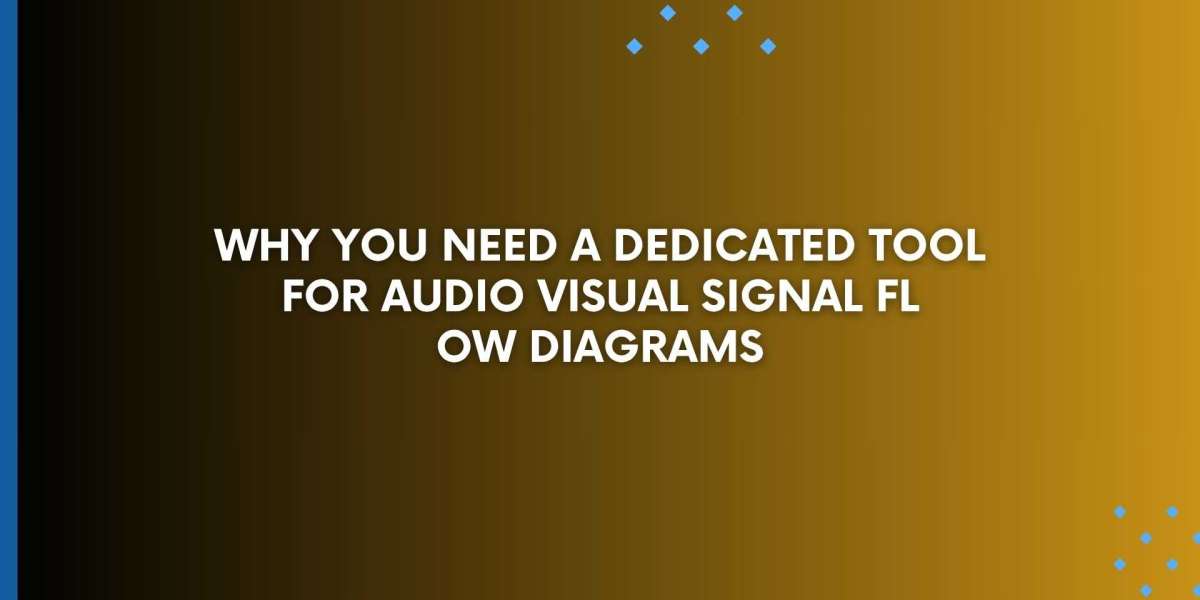In the world of modern AV design, whether you are working on conference rooms, live event setups, broadcast studios, or smart building systems, clarity and precision are everything. A key part of achieving this clarity is the signal flow diagram. These diagrams map out how audio, video, and control signals move through your system, helping everyone from designers to installers stay on the same page. But to create diagrams that truly serve their purpose, you need the right tool for the job. This is where a dedicated audio visual signal flow diagram tool becomes essential. In this blog, we will explore why generic drawing tools fall short and why using a purpose-built platform like XTEN-AV can make all the difference.
The Role of Signal Flow Diagrams in AV Projects
A signal flow diagram shows the complete path of signals as they move through sources, processors, and outputs. In an AV project, this could mean showing:
How microphones connect to mixers
How video sources route through switchers and processors
How amplifiers feed into loudspeakers
How control signals trigger automation systems
Without a clear signal flow diagram, miscommunication is common. Equipment may be wired incorrectly, troubleshooting becomes difficult, and system performance can suffer. A good diagram saves time, reduces errors, and helps ensure a successful installation.
The Problem with Generic Diagram Tools
Many AV teams try to use generic drawing tools like PowerPoint, Visio, or general-purpose diagram apps. While these tools can create basic diagrams, they have several limitations when applied to AV system design:
They lack standard AV symbols, so users must create or import their own.
They do not understand signal types, so it is easy to mix up audio, video, and control lines.
They do not link diagrams to other project documents like equipment lists or wiring details.
They are often slow and cumbersome when changes are needed.
When you are designing complex systems, these limitations can lead to confusion and wasted effort.
Why You Need a Dedicated Audio Visual Signal Flow Diagram Tool
Let’s break down the key reasons why a dedicated audio visual signal flow diagram tool is a better choice for AV projects.
1. Access to Standard AV Symbols
A dedicated tool like XTEN-AV comes with a built-in library of standard symbols for AV equipment. This includes:
Microphones, processors, and amplifiers
Video switchers, encoders, and decoders
Network devices, control panels, and more
Using standard symbols ensures consistency and makes your diagrams easy to understand for anyone in the AV field.
2. Clarity and Accuracy
When you use a purpose-built tool, you can clearly define different types of signals. For example, XTEN-AV lets you use distinct lines or colors for:
Audio signals
Video signals
Control signals
Network connections
This eliminates guesswork and helps teams see at a glance how the system is designed.
3. Faster Design Process
XTEN-AV’s audio visual signal flow diagram tool includes features that speed up your workflow, such as:
Drag-and-drop components
Smart connectors that snap into place
AI-assisted design suggestions
Easy duplication of common signal paths
This means you spend less time formatting diagrams and more time refining your design.
4. Integration with Project Documentation
A key advantage of dedicated tools like XTEN-AV is integration. Your signal flow diagram is not just a standalone image. It links to:
Bills of materials
Rack layouts
Wiring diagrams
Project management tasks
When you change your diagram, related documents update automatically. This keeps your entire project aligned and reduces manual work.
5. Easier Collaboration
Modern AV projects often involve large teams spread across locations. A dedicated audio visual signal flow diagram tool supports:
Cloud-based access so team members can work from anywhere
Real-time collaboration with live updates
Commenting and review features
This improves communication and helps catch errors early in the design process.
6. Scalability for Complex Projects
As your projects grow in size and complexity, so do your documentation needs. A dedicated tool scales with you. Whether you are designing a small meeting room or an entire campus AV system, you can:
Organize diagrams into logical sections or layers
Manage large numbers of devices without clutter
Keep documentation clean and easy to navigate
Generic tools often become slow and messy as complexity increases.
Best Practices for Using a Dedicated Tool
To get the most from an audio visual signal flow diagram tool like XTEN-AV, follow these best practices:
Start with a template — Use built-in templates to save time and ensure standardization.
Label everything — Make sure every device, connection, and signal type is clearly marked.
Use layers — Separate audio, video, and control systems into layers to keep diagrams clean.
Update in real time — Make updates as your design evolves so your documentation stays current.
Review as a team — Share diagrams with installers, programmers, and clients for feedback.
Conclusion
If you want to create clear, accurate, and professional diagrams for your AV projects, you need a dedicated audio visual signal flow diagram tool. Platforms like XTEN-AV provide the right features, symbol libraries, and integrations to help you design faster, communicate better, and deliver high-quality systems. By moving beyond generic drawing tools and choosing software built for AV design, you can improve your workflow, reduce errors, and set your projects up for success.
If you would like help getting started with XTEN-AV or exploring its free tier options, feel free to reach out. I am happy to guide you through the process.








